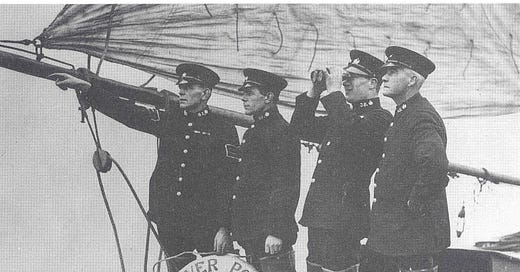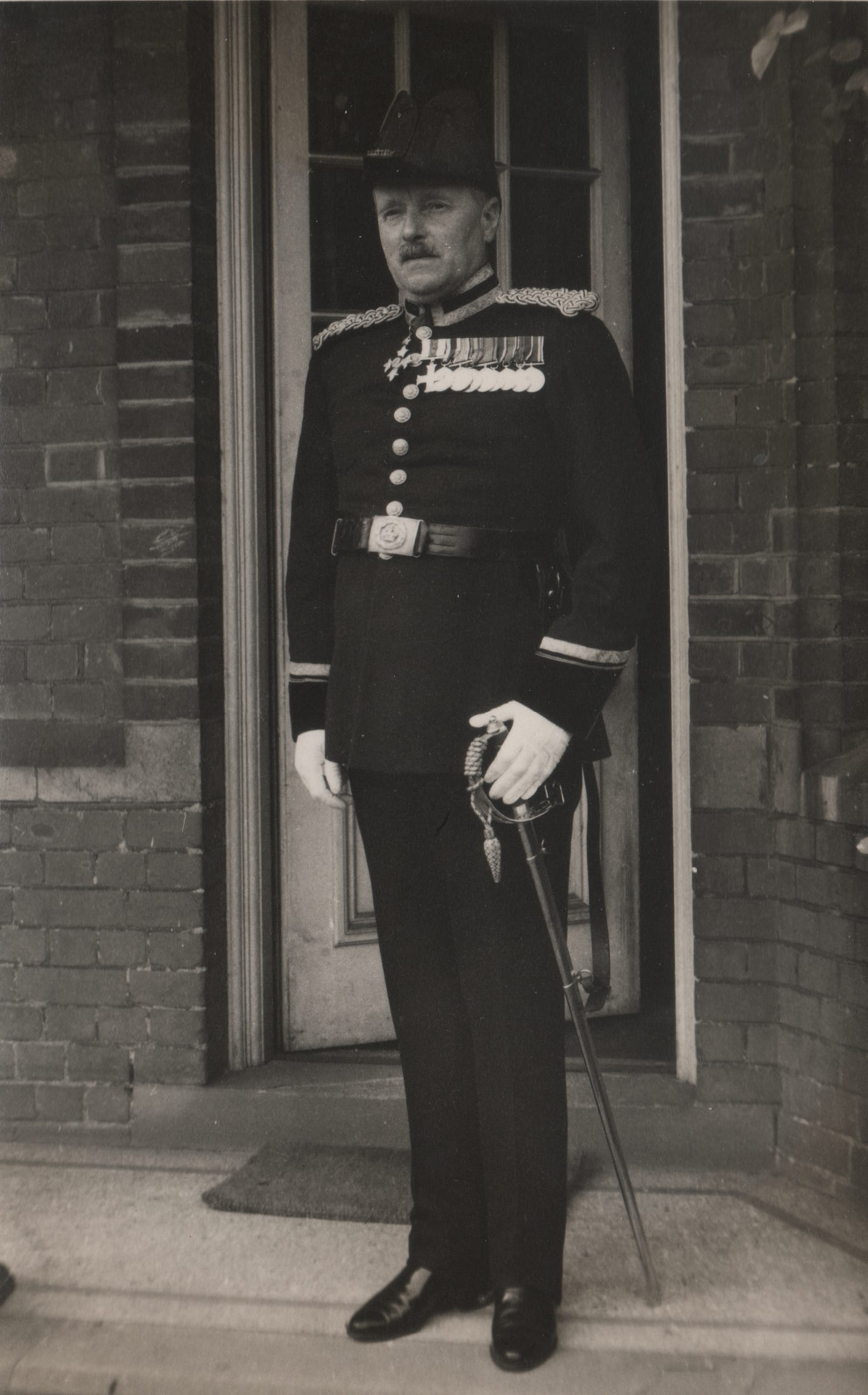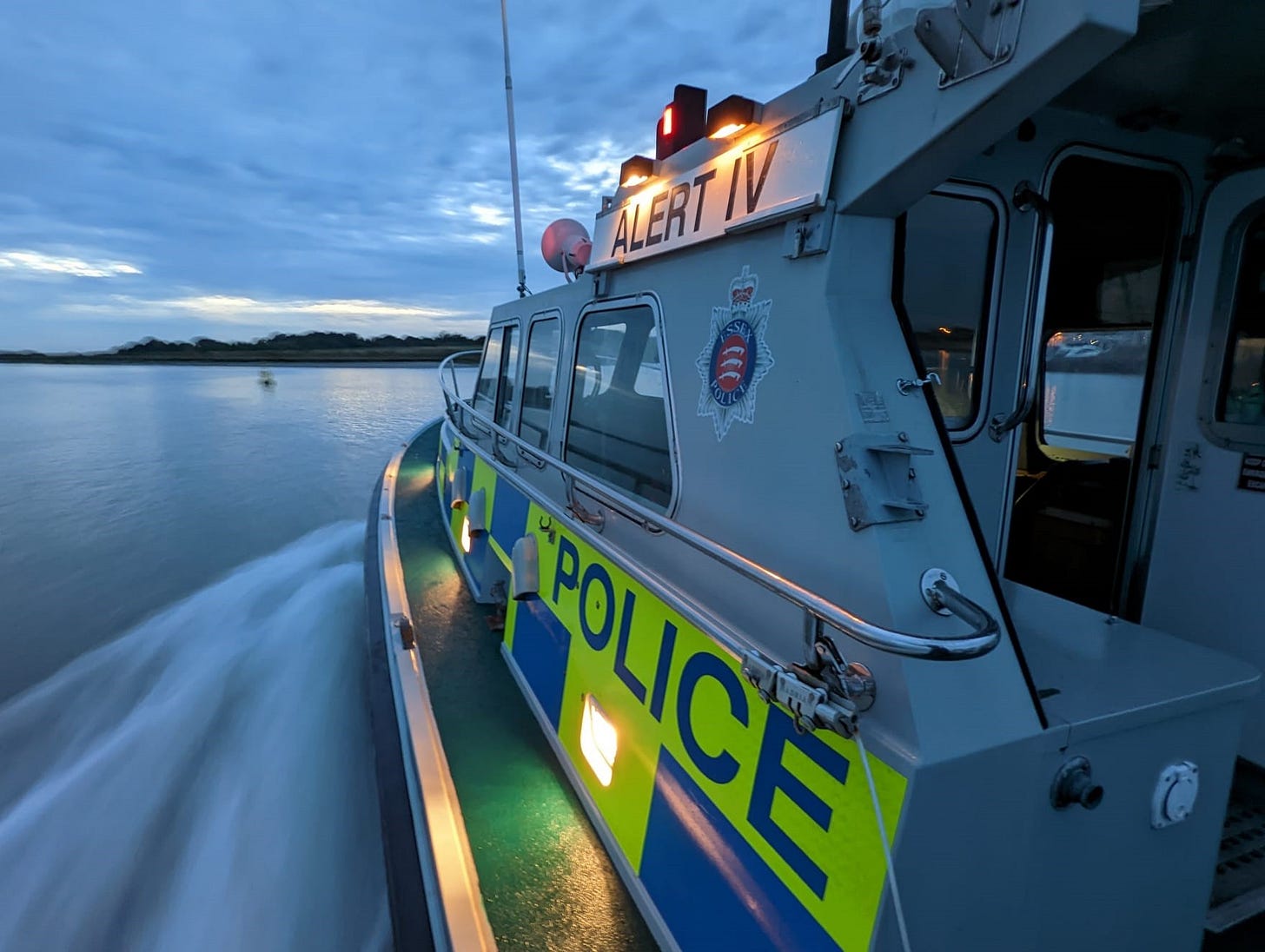In 1891 the River Colne Police were formed as part of the Colchester Borough Police to protect the lucrative oyster fisheries on the River Colne. The force consisted of a Sergeant, Thomas Poole, and three constables, C.G. Simmons, C.F. Absalom and E.J. French. A whopping 144 million oysters a year were sold on the streets of London alone, so the oyster industry was happy to cover 75% of the River Colne Police costs. The remaining 25% was paid for by the Borough rates. Poole was promoted to Inspector in 1898 and remained in charge of the force until his retirement.
The Force had a number of boats at their disposal, including ‘Alert’ and ‘Brisk’ which were built locally at Rowhedge. They also had ‘Viking’, a steam launch vessel. This was replaced in 1902 by another, but much grander, steam launch ‘Edward VIII’. Other boats included the ‘Raven’ built in 1892, ‘Victoria’, commissioned in 1897 and ‘Prince of Wales’.
In 1899 Constable French, one of the original officers, was promoted to Acting Sergeant and began writing a diary. He kept up this hobby until his retirement 20 years later, providing a fascinating insight into the day to day work of the Colne River Police. Here’s some excerpts:
February 2nd 1901:
Attended divine service at old church. Paraded from Foresters Hall, Brightlingsea, in company 7 Constables, Insp Poole, Coast Guards, Navy Reserves, Customs Officers, Clergymen and Urban Council, Freemasons, and many others of the town, shops and public houses were closed. This being done when H.M. the Queen [Victoria] was buried.
August 9th 1903:
t 1.45am whilst cruising on the Colne in company with PC Reynolds we were called to the Yacht “Lorena”. When Capt Jones meet us at the gangway and reported eight of his men and a ferryman drowned whilst attempting to row board last night.
March 25th 1905:
Reported to Inspector Poole that a submarine that had been built at Wyvenhoe [sic] may escape from the River Colne. Coast Guards are under orders to keep a strict watch for her.
October 22nd 1905:
PC Brand and Fisher arrested Fred Coppen for stealing punt’s sail, oars, rowlocks, map cover. I ordered Mr Norfolk to drive prisoner to Colchester the charge for hire was 12/-.
In 1914 The Port of London Authority suggested that the Kent, Essex and Metropolitan Forces should link up to police the Thames from Dagenham to the sea, which was unsupervised at the time. However, there was no statutory authority, so Essex decided to shelf the idea. Chief Constable Captain Peel reconsidered the matter in 1948. It’s worth mentioning that the River Colne Police were in force until Colchester Borough Force merged with Essex County Constabulary in 1947. Perhaps this reignited the debate on river policing.
In January 1949 a conference recommended a police patrol be established. As a result, an ex-RAF sea plane lender, ‘Karroo’, was purchased in May. It was flat-bottomed, 40ft long and powered by twin 100hp Perkins diesel engines with a top speed of 20 knots. She was fitted out at the Metropolitan Police river station at Wapping and handed over to Essex in the July. In September 1949 she commenced her first duties as the ‘Vigilant’, the first of a number of vessels to bear that name. In 1950 she assisted at the scene of the HMS Truculent disaster, a submarine which sank in the Thames Estuary with the loss of 64 lives.
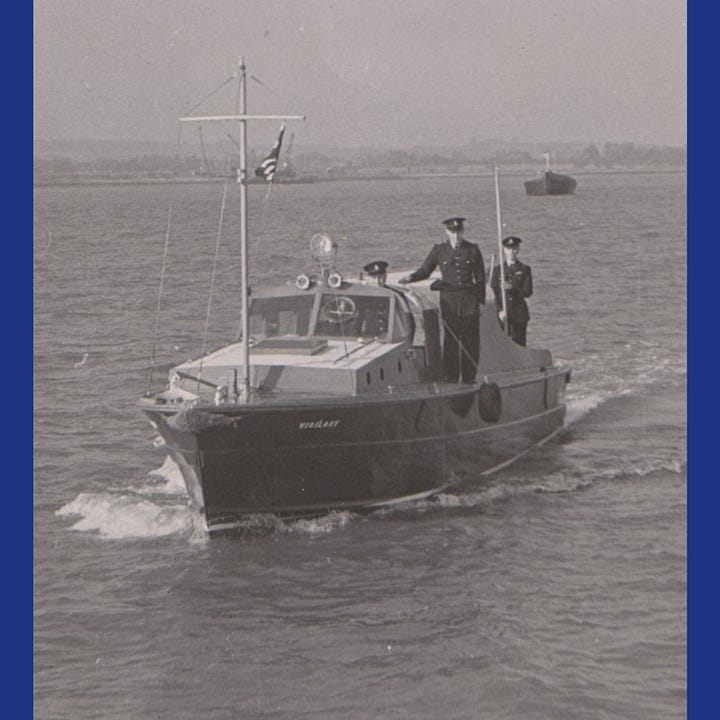


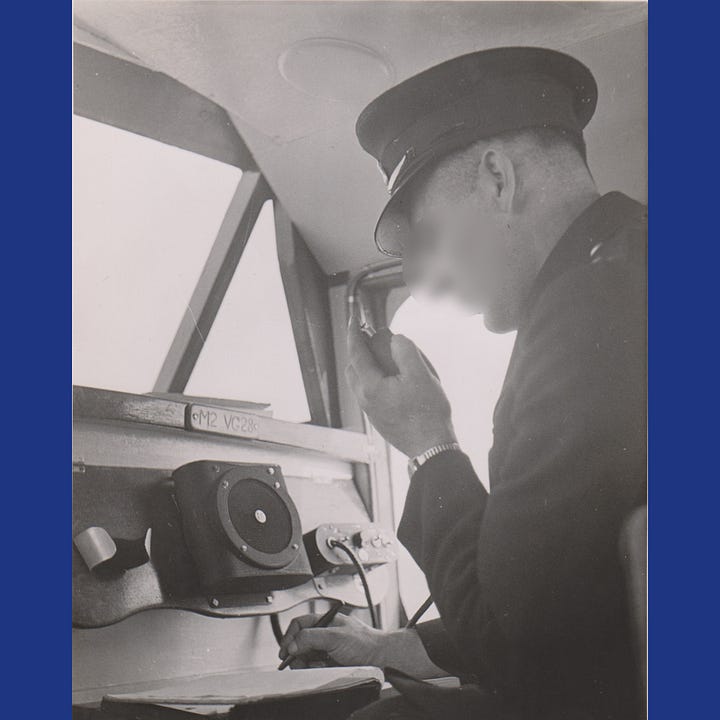
Gradually leisure activities on the river increased and the nature of policing on the Thames changed. The Force began to realise that the Vigilant wasn’t suitable for operations in the wider reaches of the river, becoming unmanageable in heavy seas. In 1959 the decision was made to replace her with the Vigilant II – the first time in this country that a boat had been designed for police duty! Built by James Taylor of Shoreham, Sussex, she was 42ft long, constructed of mahogany and teak. Powered initially by twin Perkins engines she had a top speed of 17 knots. She cost £9000 and was officially launched on the 5th August 1959.
Based at Tilbury the Vigilant II was to take part in many rescue operations in the River Thames and remained in service until 1978.


In 1966 it was agreed in the interests of safety and to prevent a rise in crime in coastal waters to purchase a second patrol boat and a naval architect was engaged to draw up specifications. As a result, in June 1967 the Police Authority agreed to purchase a 21.5ft Tod Tuna motor launch to patrol the River Blackwater. She was named ‘Alert’ after the boat used by the Colne River Police in 1891.
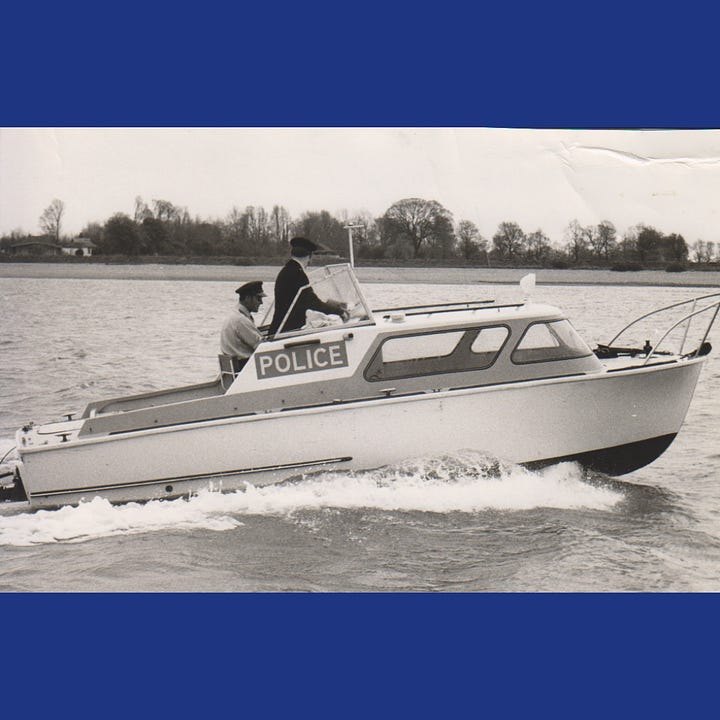

By 1970 leisure use of the Thames had increased enough for the Chief Constable to consider an additional launch and crew. The joint Police Authority agreed to the proposal, allocating £10,000 towards the costs. A 27ft Cheverton Champ work boat was purchased, equipped with twin Perkins diesel engines and fitted out for all weather duties. Names for the new vessel were requested through the force journal and the name ‘Watchful’ was chosen. She was completed on November 5th, 1970, commissioned to patrol the East Essex coastline including the Rivers Crouch, Roach, Blackwater and Colne.


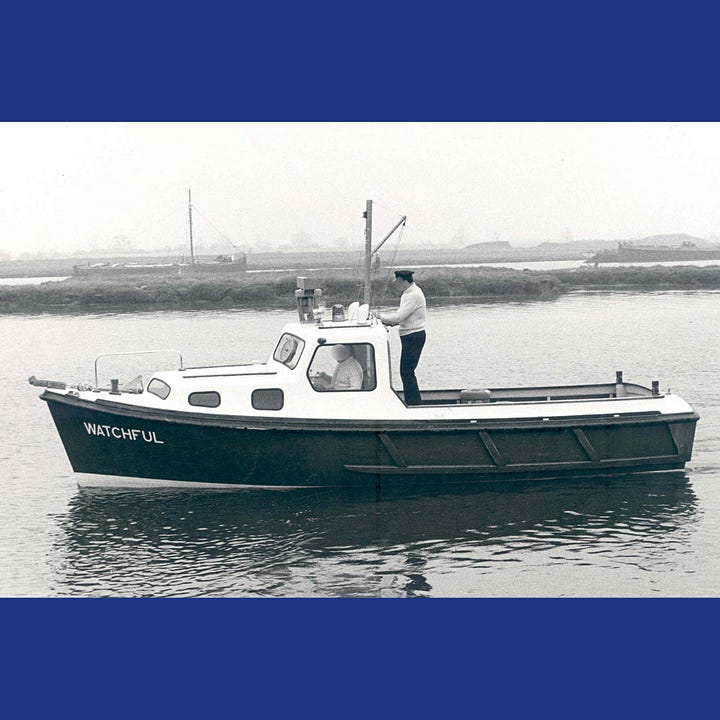

In 1974 the Alert was replaced with the Alert II. It was a purpose-built Aqua Bell 33 fitted with twin 180hp Ford Mermaid turbo diesel engines, which gave a top speed of 28 knots. Based at Bradwell Marina she would patrol the coast and rivers as far as Harwich and the River Stour.


After 20 years of service Vigilant II was replaced with Vigilant III. Commissioned on 31st May 1979, it was a North Gael 40, powered by twin Volvo 330hp turbo diesel engines. Despite weighing 15 tons these specifications gave it a top speed of 21 knots! She was moored seasonally between the Ray, off Leigh-On-Sea, and Tilbury landing stage. Like all police boats she was subject to strict regulations and carried a wealth of safety equipment and technology.
In 1982 the Marine Unit became part of the newly named Operations Division. That year weaknesses were found in the hull of the Alert II and the decision was made to replace her. An ex-demonstration Lochin 33, the prototype for a later RNLI vessel, was found and renamed the Alert III. She was moored at Bradwell Marina and the engine was replaced with a twin Volvo 360hp turbo diesel. This gave her a top speed of 23 knots and she was a sturdy, sea-worthy workboat – perfect for patrolling Essex waters!


The Marine Unit boats had lots of different features to patrol in the varying conditions of Essex waters, but they couldn’t do everything. We found these pictures in our collection of the Essex Police jetski! Unfortunately, we don’t have any information about it, other than it is a Polaris 750 model. If anyone can add further information for us please put it in the comments below!

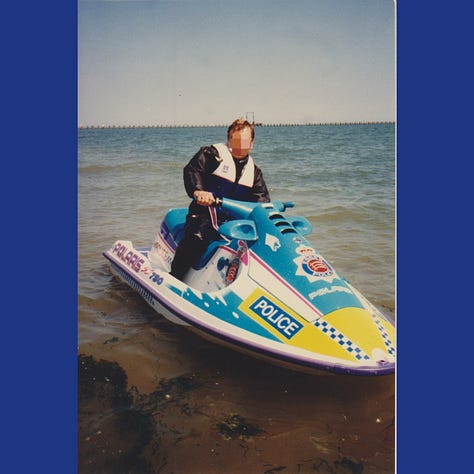

Something that has always been part of Marine Unit operations, regardless of vehicle, is search and rescue. This requires specialist training, not only in the rescues themselves, but working with other organisations and their equipment. Over the course of its history the Marine Unit has been known to work with the Coastguard, Customs and Excise, RAF rescue helicopters, Royal Navy divers, H.M. Immigration Services, Special Branch and the RNLI! This remains the same today, and jobs can include medical emergencies, criminal activity, missing people and even unexploded bombs! These photos show some of the training exercises over the years.




The Marine Unit also have trained divers who can assist with underwater search and recovery. These images show the diving suit and equipment from around 1968.

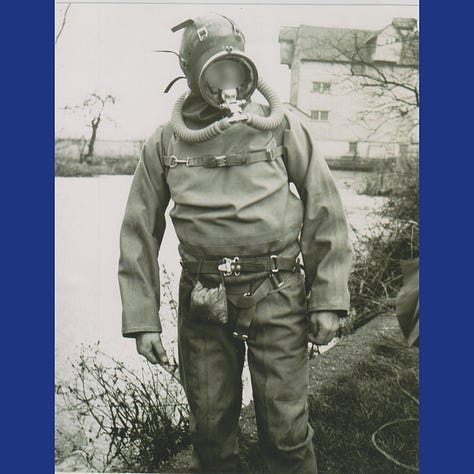

As well as boats and jetskis, the Marine Unit also have road vehicles! These carry vital technology, extra equipment and communication systems so multiple units can co-ordinate an operation. Vehicles need to cope with the varying terrain around Essex’s waterways and have adapted to accommodate new technology.


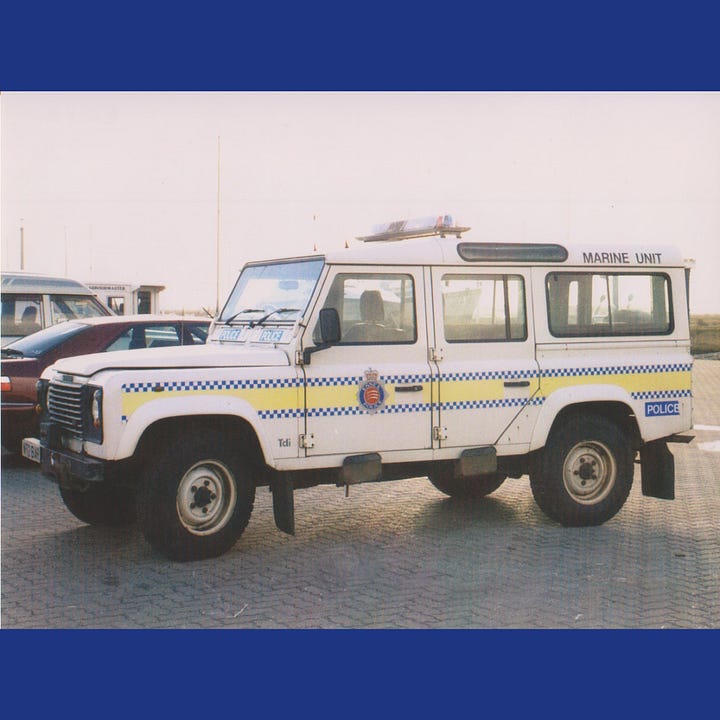
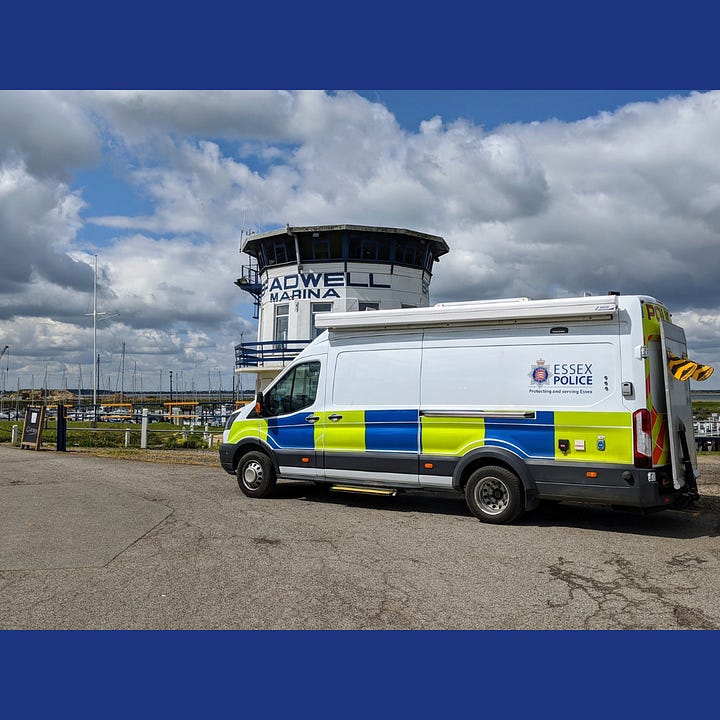
Today the Marine Unit carry out a variety of roles including countywide shore patrols, public relations, water safety, crime prevention, marine-crime detection and diving operations. They work with multiple agencies, test out new ideas and train with lots of other Essex Police departments. The Marine Unit vehicles include the Alert IV, custom-fitted vans and RIBs, all of which have high-spec technology.
That being said some bits of equipment would be recognisable to the first Marine Officers…



